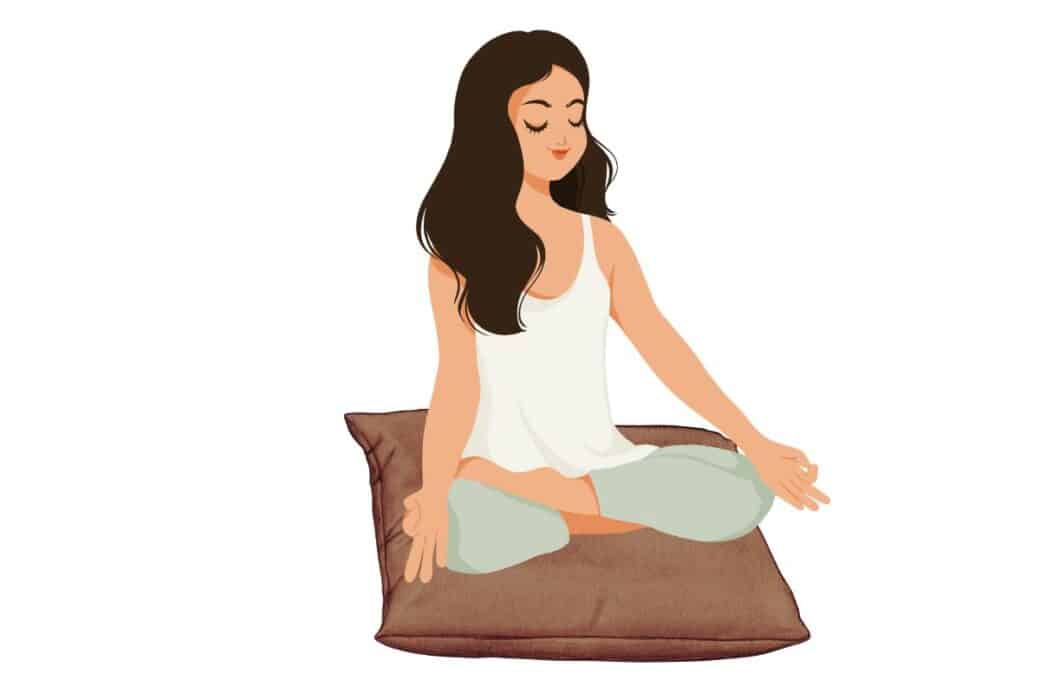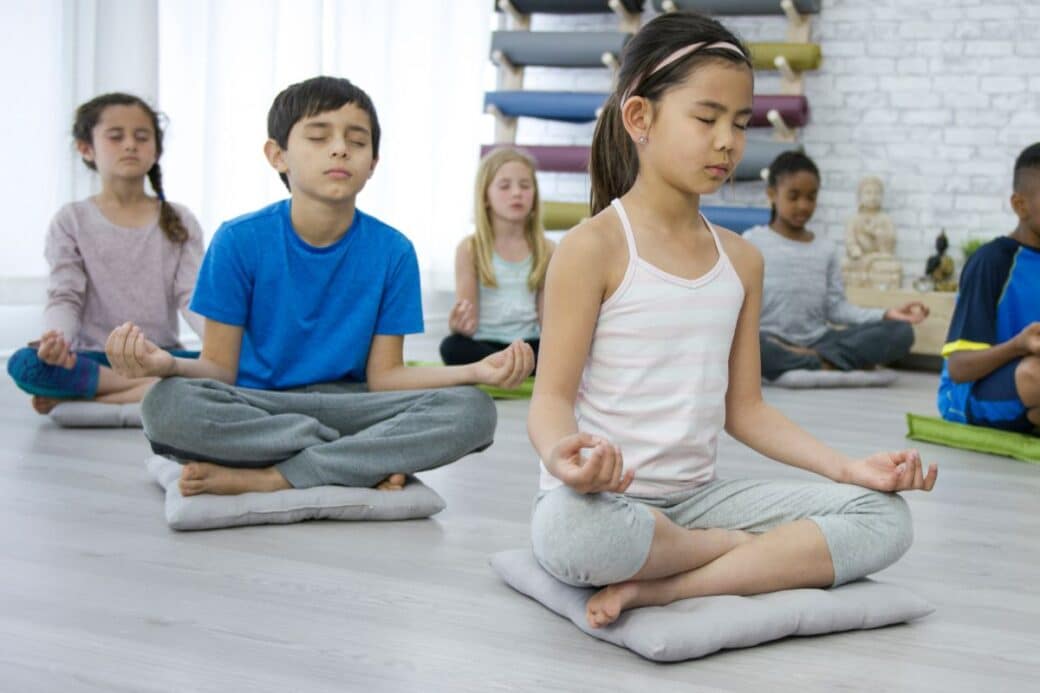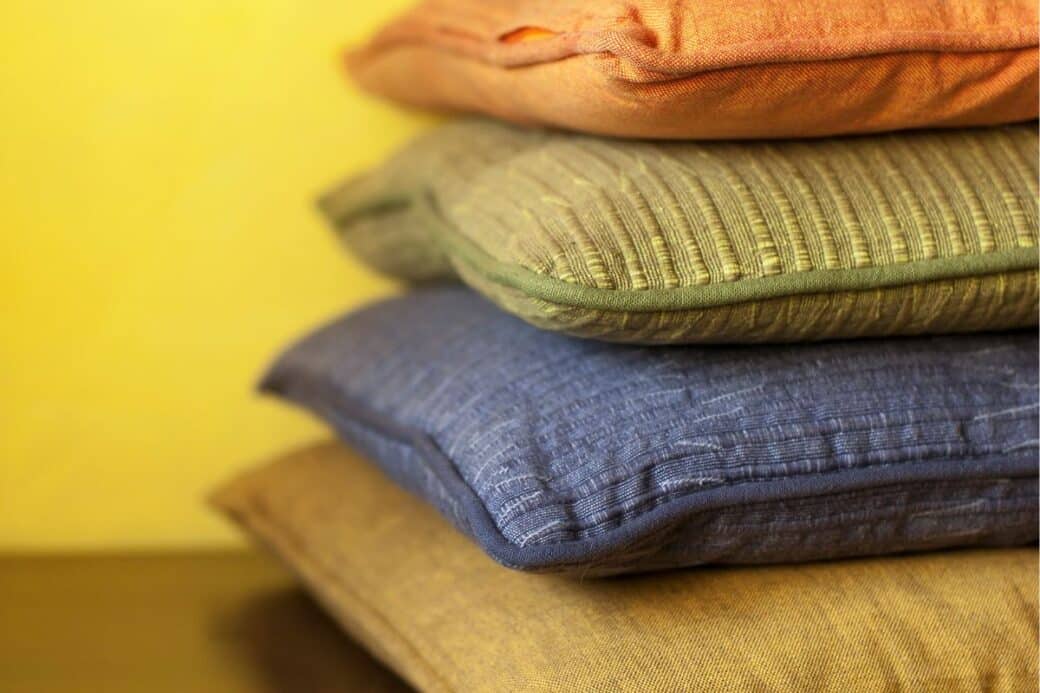Are you looking to enhance your yoga and meditation practice? Look no further than the use of a yoga meditation cushion. This essential accessory offers optimal support and comfort, allowing you to sink deeper into your practice and fully immerse yourself in the present moment. Whether you’re a seasoned yogi or just starting your journey, incorporating a yoga meditation cushion into your routine can drastically elevate your experience and help you find a sense of peace and tranquility on and off the mat. Find out how to optimize your practice with the use of a yoga meditation cushion in this article.

Yoga Meditation Cushion Use: Understanding the Importance of a Yoga Meditation Cushion
Enhancing comfort during meditation
Meditation is a practice that requires stillness and focus, and having a comfortable seat can greatly enhance your experience. A yoga meditation cushion provides the support and padding necessary to alleviate pressure on your hips, knees, and ankles, allowing you to sit for longer periods without discomfort. By relieving the strain on your joints, a cushion creates a more pleasant and relaxed meditative state, making it easier to dive into deep states of concentration and connection.
Improving posture and alignment
Proper posture is essential during meditation to ensure the flow of energy and maintain a grounded, centered state. A well-designed meditation cushion helps to align your spine, promoting a natural curve in the lower back and preventing slouching or rounding of the shoulders. By providing stability and support, the cushion encourages a straight and upright posture, allowing for better circulation and energy flow throughout your body. With improved alignment, you can truly embody the essence of meditation and experience its full benefits.
Supporting different yoga practices
Yoga is a diverse discipline that encompasses various styles and techniques. Whether you practice Hatha, Ashtanga, Kundalini, or any other form of yoga, a meditation cushion can be a valuable tool for support and stability. Many yoga poses require seated positions, and the cushion provides a comfortable and stable foundation to maintain these postures for longer periods. It enables you to focus on your breath, balance, and movement without the distraction of discomfort or strain. No matter your preferred yoga practice, a meditation cushion can help enhance your overall experience and deepen your connection to the practice.
Types of Yoga Meditation Cushions
Round Zafu Cushions
Round zafu cushions are a popular choice among meditators due to their versatility and support. These cushions have a round shape and are filled with either buckwheat hulls or kapok fibers. Buckwheat hulls conform to the body’s shape, providing stable support and contouring to your individual form. Kapok fibers are soft and supportive, offering a comfortable and plush seat. Round zafu cushions are ideal for practitioners who prefer a traditional meditation cushion and enjoy the feeling of being cocooned in a supportive embrace.
Rectangular Bolsters
Rectangular bolsters are another option for those seeking additional comfort and support. They have a longer and narrower shape compared to round zafu cushions. Rectangular bolsters are typically filled with either cotton or foam, providing a firm yet cushioned surface to sit on. These cushions offer excellent back support and can be used in various yoga poses, making them a versatile option for both meditation and physical practice. If you’re looking for a cushion that can double as a prop in your yoga practice, a rectangular bolster may be the perfect choice.
Meditation Benches
For those who prefer a different sitting position during meditation, meditation benches provide an alternative to sitting cross-legged on a cushion. These benches have a curved or angled seat that encourages an open pelvis and a natural, aligned posture. By kneeling on the bench and sitting back, you reduce the strain on your lower back and knees, making it easier to maintain a comfortable and stable position. Meditation benches are often made of wood and are lightweight and portable, making them an excellent option for practitioners who travel frequently or have limited space.

Choosing the Right Meditation Cushion for Your Practice
Considering your body size and flexibility
When choosing a meditation cushion, it’s essential to take into account your body size and flexibility. The height and firmness of the cushion should be appropriate for your individual needs. If you have tighter hips or limited flexibility, a higher cushion can help alleviate strain on your knees and ankles. Conversely, if you have more flexibility and prefer a lower seat, a cushion with less height may be more suitable. It’s crucial to find a cushion that supports your unique body structure and allows you to sit comfortably for extended periods without discomfort.
Cushion filling options analysis
The filling of the cushion greatly affects its support and comfort. Different fillings offer varying levels of firmness and conformability. Buckwheat hulls provide a supportive, yet contouring surface, allowing the cushion to mold to your body shape. Kapok fibers are soft and plush, providing a comfortable and gentle seat. Foam and cotton-filled cushions offer a more firm and stable surface. Consider your preferences and needs when selecting a cushion filling. Experimenting with different materials can help you find the ideal balance of support and comfort for your meditation practice.
Price and quality considerations
While price should not be the sole determining factor, it’s important to consider your budget when selecting a meditation cushion. Cushions come in a range of prices, and quality can vary. Investing in a high-quality cushion ensures durability, longevity, and optimal support. However, there are also affordable options available that provide adequate comfort and functionality. Consider your budget and prioritize your needs to find a cushion that strikes the right balance between price and quality.
Proper Placement of the Yoga Meditation Cushion
Ideal spot selection in your meditation space
Creating a dedicated meditation space can greatly enhance the effectiveness of your practice. When placing your meditation cushion, choose a spot that is free from distractions and allows for peace and tranquility. Ideally, your meditation space should be clean, clutter-free, and well-ventilated. Find a quiet corner or room in your home where you can escape from daily distractions and fully immerse yourself in your practice. By selecting a serene and peaceful spot, you create the perfect environment for deepening your meditation practice.
Correct positioning of the cushion under your body
Once you have chosen the perfect spot for your meditation cushion, it’s essential to position it correctly to optimize your posture and alignment. Sit on the cushion and center yourself, ensuring that your sit bones are evenly supported. For cross-legged positions, the cushion should be placed under your hips, elevating them slightly to create a natural curve in your lower back. If using a meditation bench, position it to support the open pelvis and maintain an upright posture. Proper cushion placement is vital for maintaining a comfortable and aligned position throughout your meditation practice.
Alignment with the rest of your yoga gear
In addition to proper cushion placement, it’s important to consider the alignment of your cushion with the rest of your yoga gear. Your yoga mat should be positioned in a way that allows for a seamless transition from asanas to seated meditation. Ensure that the cushion and mat are aligned, allowing you to move from physical practice to stillness without disruption. By creating a harmonious flow between your yoga gear, you can cultivate a sense of continuity and unity in your practice.
Ideal Sitting Positions on a Meditation Cushion
Full Lotus Posture
The full lotus posture, also known as Padmasana, is a classic seated meditation position. In this position, both feet are placed on top of the opposite thigh, with the knees resting on the cushion. The full lotus posture is highly stable and promotes a grounded and centered state. It allows for a straight and upright spine and enhances concentration by minimizing physical distractions. If you have the flexibility to comfortably assume this posture, it can be an excellent choice for your meditation practice.
Half Lotus Posture
The half lotus posture is a modified version of the full lotus posture and is a suitable alternative for those with less flexibility. In this position, one foot is placed on top of the opposite thigh, with the other foot resting on the floor beneath the opposite thigh. This posture still provides stability and support while allowing for a more relaxed and comfortable sitting position. The half lotus posture is a popular choice among meditators and offers a balance between stability and flexibility.
Burman Posture
The Burman posture, also known as the Burmese posture, is a simple yet effective sitting position for meditation. In this posture, both feet are placed in front of the body, with the knees bent and resting on the cushion. The Burman posture allows for a more relaxed and open hip position, making it suitable for those with tighter hips or limited flexibility. It provides a stable foundation for meditation and encourages a straight and aligned spine.
Seiza Posture
The Seiza posture involves kneeling on the cushion with the knees and tops of the feet resting on the floor. This posture promotes an open and aligned pelvis, allowing for a natural curvature of the spine. The Seiza posture can be especially beneficial for those with lower back pain or discomfort, as it reduces strain on the lumbar region. It also facilitates deep diaphragmatic breathing, making it an excellent choice for incorporating breathwork into your meditation practice.
Enhancing Meditation with the Use of a Cushion
Achieving deeper states of meditation
A comfortable and supportive meditation cushion can greatly enhance your ability to enter deeper states of meditation. By alleviating physical discomfort and providing optimal alignment, the cushion allows you to relax fully into your practice and let go of any distractions. As you sink into a state of deep relaxation and concentration, you can penetrate the layers of the mind and access a profound sense of tranquility and self-awareness. The cushion becomes a gateway into the realm of meditation, enabling you to explore the depths of your consciousness.
Reducing distractions through comfort
Discomfort and physical distractions can detract from the quality of your meditation practice. Pain or stiffness in the body can lead to wandering thoughts and an inability to focus. A well-cushioned seat reduces these distractions, allowing you to concentrate on your breath and inner experience. When your body is free from discomfort, you can immerse yourself fully in the present moment, cultivating a heightened sense of mindfulness and deepening your connection to the essence of meditation.
Using the cushion for pranayama exercises
Pranayama, or yogic breathing exercises, are integral to the practice of meditation. The cushion can serve as a versatile prop during pranayama exercises, offering support and stability while maintaining an open and aligned posture. Whether practicing deep belly breathing or more advanced breath control techniques like alternate nostril breathing, the cushion provides a comfortable base for these exercises. Using the cushion in conjunction with pranayama can amplify the benefits of both practices, leading to a more profound and transformative meditation experience.
Care and Maintenance of Your Meditation Cushion
Regular Cleaning and Deodorizing
To ensure the longevity and cleanliness of your meditation cushion, regular cleaning and deodorizing are essential. Depending on the material of your cushion, you may be able to spot clean it with a mild detergent and water solution. For cushions with removable covers, follow the manufacturer’s instructions for washing and drying. It’s also beneficial to periodically expose your cushion to fresh air and sunlight to naturally eliminate any odors. By taking care of your cushion, you can maintain its freshness and functionality for years to come.
Refilling and fluffing up the cushion
Over time, the filling of your meditation cushion may compress or lose its shape. To restore its support and comfort, consider refilling or fluffing up the cushion. For cushions filled with buckwheat hulls, you can remove some of the filling or add more to achieve the desired firmness. Kapok-filled cushions may require fluffing and redistributing the fibers to ensure an even seat. Foam or cotton-filled cushions should be periodically shaken and plumped to maintain their shape. By tending to the filling of your cushion, you can optimize its performance and extend its lifespan.
Periodic replacement considerations
While proper care and maintenance can prolong the lifespan of your meditation cushion, it’s essential to determine when it may be time for replacement. Over time, cushions may lose their support and shape, leading to decreased comfort and alignment. If you find that your cushion no longer provides the necessary support or has become worn and flattened, it may be an indication that it’s time for a replacement. Additionally, if you have significantly changed your sitting posture or have developed specific comfort needs, it may be worth exploring different cushion options. Regularly assessing the condition and performance of your cushion ensures that you continue to have a conducive and enjoyable meditation experience.
Alternatives to Traditional Meditation Cushions
Meditation chairs
For individuals who have difficulty sitting on the floor or prefer a more elevated seated position, meditation chairs offer a practical alternative to traditional cushions. These chairs typically have a sturdy frame and a comfortable seat that supports proper alignment. Some meditation chairs are designed with a curved or adjustable backrest, providing additional back support for those who require it. Meditation chairs allow individuals who may have physical limitations or discomfort to still engage in a meaningful meditation practice, promoting inclusivity and accessibility.
Yoga mats
Yoga mats, commonly used for physical practice, can also provide a comfortable and supportive surface for seated meditation. By folding or rolling the mat to a suitable thickness, you can create a makeshift cushion to sit on. This option is particularly convenient for those who already have a yoga mat and may not want to invest in a separate meditation cushion. However, it’s worth noting that yoga mats may not provide the same level of contouring and support as dedicated meditation cushions, so they may not be the ideal choice for extended meditation sessions or individuals with specific comfort needs.
Meditation pads
Meditation pads, also known as zabutons, are flat cushions designed to be placed beneath a meditation cushion or chair. They provide additional cushioning and insulation from hard floors, enhancing overall comfort during seated meditation. Meditation pads can be used in conjunction with other seating options or as standalone support for those who prefer to sit directly on the floor. By adding extra padding beneath your cushion or chair, you ensure a more comfortable and cushioned seat, minimizing discomfort and distractions during your meditation practice.
Common Mistakes in Yoga Meditation Cushion Use
Incorrect height and size selection
One of the most common mistakes when using a yoga meditation cushion is selecting the incorrect height and size. If the cushion is too high or too low for your body, it can create discomfort and strain. It’s essential to choose a cushion that aligns with your body proportions and promotes a neutral spine position. Taking into account your flexibility and comfort preferences will guide you in selecting the appropriate cushion height and size for your practice.
Poor placement and alignment
Another common mistake is improper cushion placement and alignment. Placing the cushion too far forward or backward can disrupt your posture and cause discomfort. Additionally, misaligning the cushion with the rest of your yoga gear can create a disjointed and less harmonious practice. It’s important to take the time to ensure that your cushion is centered and properly positioned under your body, supporting optimal posture and alignment.
Neglecting regular maintenance of the cushion
Meditation cushions require regular care and maintenance to ensure their longevity and performance. Neglecting to clean or fluff up your cushion can lead to a buildup of dirt, odors, and a loss of support. An unmaintained cushion may become less comfortable and less effective in promoting a deep and focused meditation experience. By establishing a regular maintenance routine, you can prolong the life of your cushion and continue to reap its benefits.
Importance of Consistency in Yoga Meditation Practice
Setting up a regular yoga meditation schedule
Consistency is key when it comes to reaping the full benefits of yoga meditation. Establishing a regular schedule for your practice helps create a routine and a sense of discipline. By setting aside dedicated time each day for meditation, you cultivate a habit that becomes ingrained in your daily life. Whether it’s five minutes or an hour, committing to a consistent practice schedule allows you to deepen your connection to meditation and experience its transformative effects fully.
Benefits of consistency in yoga meditation
Consistency in yoga meditation practice offers a multitude of benefits. Regular practice allows you to build a stronger mind-body connection and develop greater self-awareness. As you become accustomed to the rhythm and flow of your practice, you can experience a deepening sense of calm and inner peace. Consistency also helps to strengthen your meditation skills, allowing you to access deeper states of concentration and insight. By showing up for yourself and your practice consistently, you create a solid foundation for personal growth and continued progress on your spiritual journey.
Role of a Meditation cushion in promoting consistency
A meditation cushion plays a significant role in maintaining consistency in your yoga meditation practice. By providing comfort, support, and stability, the cushion creates an inviting and conducive environment for meditation. When the physical aspects of sitting are taken care of, it becomes easier to show up consistently for your practice. The cushion becomes a familiar and comforting tool that signals the start of your meditation journey. It acts as a reminder of your commitment to self-care and personal growth, encouraging you to return to your practice day after day.
In conclusion, a yoga meditation cushion is an essential tool for anyone looking to optimize their meditation practice. By enhancing comfort, improving posture and alignment, and supporting different yoga practices, a cushion creates an environment conducive to deepening states of meditation. With various options available, such as round zafu cushions, rectangular bolsters, and meditation benches, it’s crucial to choose the right cushion for your body size, flexibility, and personal preferences. Proper placement of the cushion, along with maintaining ideal sitting positions, ensures an aligned and comfortable meditation experience. A cushion not only enhances meditation but also reduces distractions, aids in pranayama exercises, and promotes consistency in practice. By caring for and considering the maintenance of your cushion, you can extend its lifespan and continue to benefit from its support. For those who prefer alternatives, meditation chairs, yoga mats, and meditation pads offer additional options. However, it’s crucial to avoid common mistakes such as incorrect height and size selection, poor placement and alignment, and neglecting regular maintenance. Finally, by establishing a regular yoga meditation schedule and prioritizing consistency, you can experience the full range of benefits that meditation and a quality cushion can provide. So why wait? Invest in a yoga meditation cushion today and unlock the transformative power of your practice.




